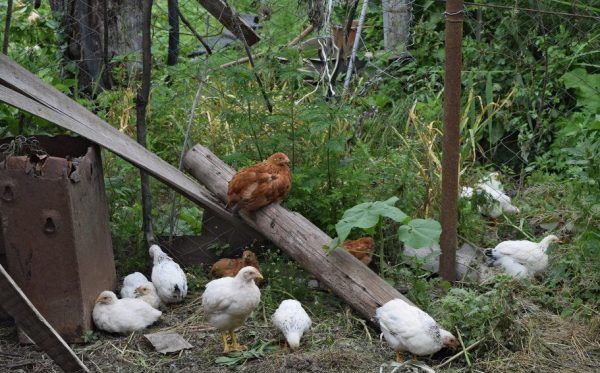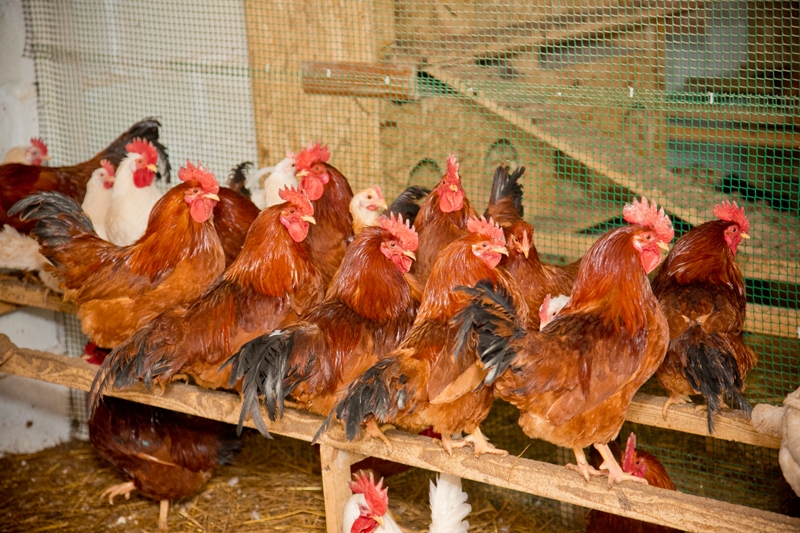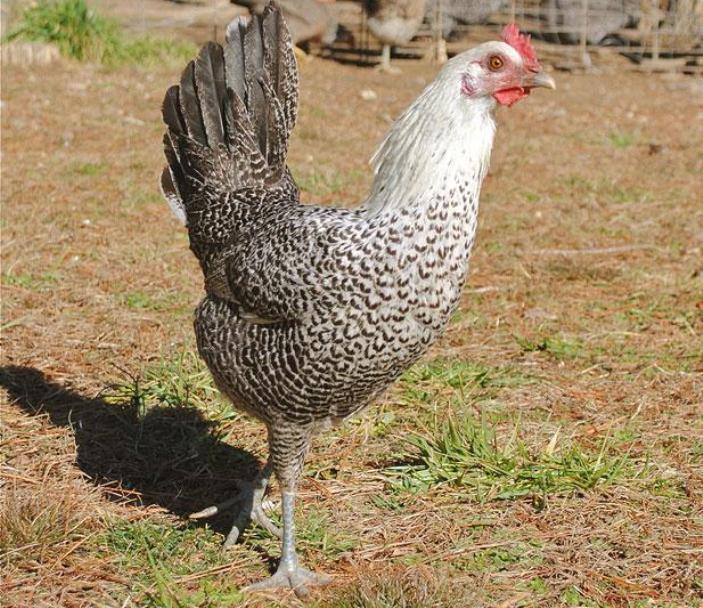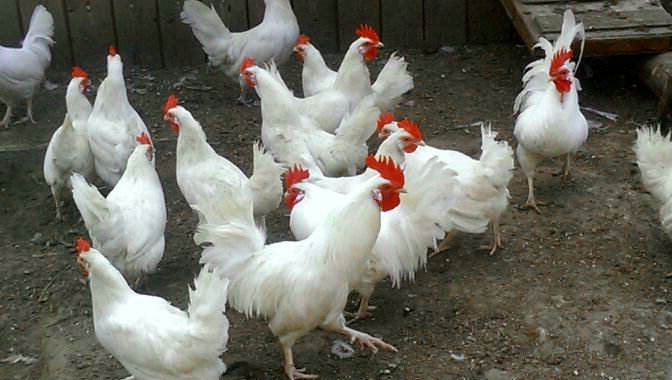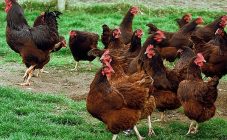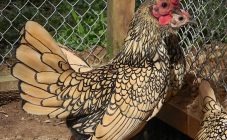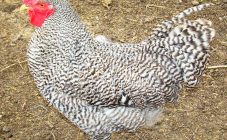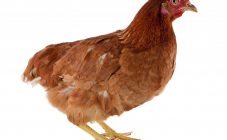Content:
In addition to the 700 breeds of chickens known today, there are a lot of unrecognized options, hybrids and crosses. Every year scientists add new, improved species to the list. But dwarf breeds, or mini chickens, are of particular interest to breeders - they have a minimum body weight, are advantageous in keeping and breeding. What is the difference between miniature chickens, what breeds to choose for the farm and how to care for them - further in the text.
Origin story
Mini chickens are not new to breeding science. It is known that they were engaged in breeding long before the appearance of modern ideas about genetics. The variety of dwarf chickens is the result of breeding work using the so-called dwarf gene, which in science is called two letters - dw. In Russia, the development of the direction was carried out by scientists from VNITIP.
The goal of creating miniature copies of popular breeds was to reduce maintenance costs and increase the profitability of commercial poultry farming. Ultimately, domestic breeders were able to create types of mini-chickens that are popular both in poultry farms and on private farms.
Description
Dwarf breeds are a separate direction in poultry farming. Although each species is different, they all share a common characteristic - light weight and compact build.
Varieties
There are several hundred dwarf breeds in the world - recognized and not standardized.
The popular varieties are the following:
- minimal meat breeds of chickens;
- mini egg.
There are dwarf representatives of the decorative direction, but in terms of the number of livestock and popularity, they are not able to compete with practical layers of meat and egg type of productivity. Below are brief overviews of the most popular mini-breeds.
Mini meat breed P-11
The variety bred by breeders from VNITIP was codenamed P-11. This species is the result of crossing Rhode Island with carriers of the dwarf gene. P-11 is a minimal-meat breed of chickens, the description of which repeats the characteristics of standard representatives of Rhode Island with only a few differences:
- body weight up to 2.3 kg in a male;
- chicken weight - up to 1.8 kg;
- shortened metatarsus;
- miniature, upright comb.
There are 2 options for the color of the P-11 plumage:
- red;
- pale yellow.
A thoroughbred rooster outwardly completely repeats the traditional representative of Rhode Island, has the same physique, a developed skeleton and a wide chest. Chickens are distinguished by a less pronounced breast and belly, a dull shade of plumage.
Mini meat fawn chickens are distinguished by increased egg production rates - they produce up to 200-240 eggs per year. They begin to rush at 22-24 weeks of life. But, the qualitative and quantitative indicators of masonry directly depend on nutrition.
Mini egg breed B-33
Chickens obtained by crossing carriers of the dwarf gene and Leghorns. Exterior differences between the male and female individuals of the dwarf Leghorn B-33 are presented in the table.
| Characteristic | Hen | Cock |
|---|---|---|
| Body mass | 1.2-1.4 kg | 1.4-1.7 kg |
| Color | White | White with a silvery sheen |
| Plumage | Thick and thick | Dense, dense with overdeveloped braids and flight feathers. |
| Torso | Oval, compact, lean with a well-developed breast. | Oval, horizontal set with a sunken chest and moderately muscled. |
| Crest | Serrated, small. | Overdeveloped with deep teeth, erect. |
| Paws | Metatarsus are short, wheat-yellow in color. | Thin-boned, yellow. |
| Earlobes | White, oval | Large, snow-white, oval. |
Laying hen В-33 begins laying at 4 months, but initially each egg weighs within 48-55 g. Closer to one year of age, the weight of eggs stabilizes and is 55-62 g. The largest eggs are taken for incubation.
Decorative dwarf chickens
The decorative type of chickens is an area of increased interest for collectors, breeders of exotic breeds. Among the representatives of the dwarf species, there are the most popular.
- Milfleur - French fur-legged chickens with unknown breeding history. The birds are distinguished by a variegated, multi-colored color and a miniature body. Weight from 700 g to 1.4 kg, egg production - 120 eggs per year.
- Cochin-Chin is a Chinese dwarf copy of the famous representatives of the meat type. There are about 10 different colors. Distinctive characteristics are a developed skeleton and musculature, curvaceous forms and a rich feather cover. The dwarf Cochin's paws are covered with feathers to the tips of the toes.
- Shabo is a Japanese bantam, no larger than a dove. Weighs about 500-800 g. There are various color variations, so there are no strict requirements for feather color. The difference is a long tail sticking out over the back at a right angle. The body is miniature, elongated.
Maintenance and feeding
In the nuances of content and requirements, mini-chickens differ from traditional breeds only for the better. From a practical point of view, they are beneficial for the following reasons.
- They occupy the minimum area - the permissible stocking density is 2 times higher.
- Feathered are unpretentious in nutrition.
- Consume 30% less feed.
- They get sick less often.
Cellular content is an extreme measure. This approach to setting up a bird's home will reduce its productivity potential and longevity. A good option is free range, or a poultry house with a limited but spacious yard.
The chicken yard for walking should be equipped with:
- feeder;
- drinker;
- a container with sand and ash;
- a canopy or shelter in case of heat or rain;
- a container with small stones.
The basic feeding rules are the same, but taking into account the specifics of the breeds, the following nuances should be taken into account:
- three meals a day are recommended due to the accelerated metabolism;
- the winter diet consists of 50% energy feed;
- during the period of seasonal molting, an increase in fat in the diet by 10-15% is necessary;
- in spring and summer - increased protein and calcium content.
At the stage of intensive growth, feeding with a compound feed with a protein content of 20% is recommended. At 4-5 months, a gradual transition to a pre-lay diet is made.
Breeding
Breeding Success Secrets:
- to select only the best representatives of the breed for the parent herd;
- lay the largest eggs for incubation;
- check each egg on an ovoscope;
- provide a brood hen with everything necessary to prevent it from leaving the nest.
Chicks hatch on days 20-21. Further care and feeding of the offspring is carried out according to standard rules.
Advantages and disadvantages
The pros and cons of mini chickens are relative. In comparison with standard brooders, they have the following features:
- fast growth;
- early maturation;
- calm character;
- increased activity;
- omnivorous;
- minimum body weight;
- short hock;
- small mass of eggs.
Mini chickens are the best option for commercial and private farms. Breeding dwarf chickens does not require special skills and knowledge. These are breeds with high feed conversion, minimum housing requirements and maximum survival potential.
